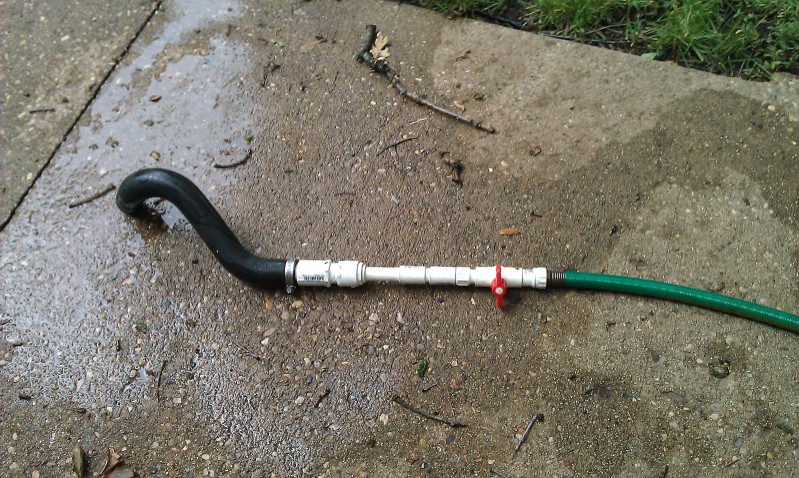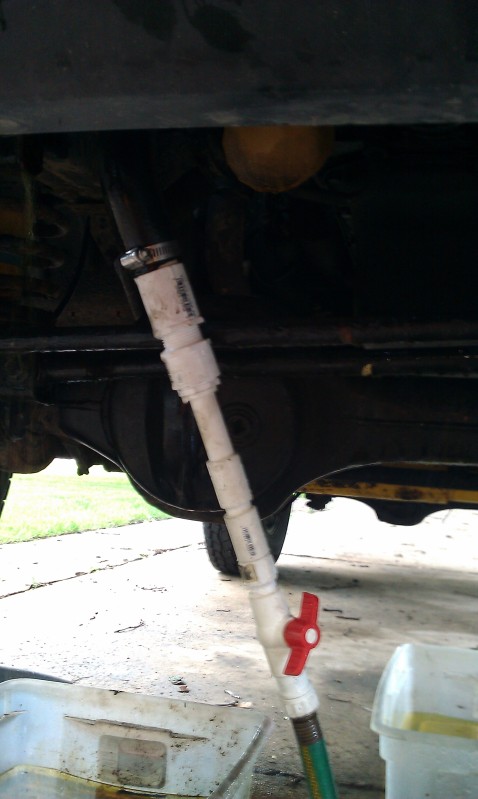Home radiator flush method?
#1
So I have reason to believe the radiator on my '96 is clogged. Tried two fan clutches and neither comes on.
So I'm looking for an easy home radiator flush method.
I found a fitting in my box-O-crap that will screw into the radiator fill and adapt to a garden hose. If I use this as my entry point what would be my best exit point? Out the top hose on the drivers side?
So I'm looking for an easy home radiator flush method.
I found a fitting in my box-O-crap that will screw into the radiator fill and adapt to a garden hose. If I use this as my entry point what would be my best exit point? Out the top hose on the drivers side?
#2
I would pull the radiator and fill it with CLR and let it soak for a while. then flush really good. Or use a vinegar/water mixture. Add it and run the truck up to temp and make sure it circulates good. Let it sit and cool back down. Drain, flush, drain, flush, and once its all empty and clean refill with coolant/water mix. Seems common with older V8s from what I found on google. Thats what I did on the 94. But it came out crystal clear and it was a headgasket...not a radiator.
#4
My 97 had a clogged radiator. I tried off the shelf flush, white vinegar, removed and let muriatic acid soak inside it (made it shiny). None of these took on the dried and baked calcium, but a trip to the indy rad shop did the trick. $75 carry in, they do farm and construction gear, and a Rover radiator is a teacup to these guys. They unsoldered a side tank and rodded it out, hot flushed with citric acid, soldered up a coiuple of maybe leaks. I make 178 - 183 on the road, maybe up to 187 at 70 mph; 180 stat.
A rad that is pretty sludged up will be cooler at the bottom, by more than 10F. If the cool zone grows large enough, cool air is hitting the fan clutch and it won't come back to full power coupling.
A rad that is pretty sludged up will be cooler at the bottom, by more than 10F. If the cool zone grows large enough, cool air is hitting the fan clutch and it won't come back to full power coupling.
#5
I had mine rodded for 40 bucks. 180* stat. Normally runs 179-185* Here lately I've seen 195-202 with the higher outside temps and AC running. I have one condenser fan that is shot and have been hauling around a 10' utility trailer with 300-1000 lbs on it. Temps stay consistently higher when pulling a decent load.
#6
After work I plan on swapping in the known good viscous clutch from my trail rig. Because now that I think about it the fan on my driver doesn't come on even at first start up, and it should after sitting 8 hours.
If that doesn't get it I'll stick a pipe in the lower Radiator hose and reduce it down to garden hose size, pinch off any smaller lines, pull the upper hose and flush it from bottom to top.
If that doesn't get it I'll stick a pipe in the lower Radiator hose and reduce it down to garden hose size, pinch off any smaller lines, pull the upper hose and flush it from bottom to top.
#8
Swapped out fan clutches, no change. Decided to flush the radiator. I disconnected the lower hose at the radiator and the upper hose at the Thermostat. I made up a device to go from garden hose into a piece of old radiator hose I had and connected it to the lower end. I took the upper hose and turned it down to dump in a 5 gallon bucket. I flushed about 15 gallons of water through it till it ran clean. Decided to swap out the Tstat too with an old good one I had. The existing Tstat had the jiggle valve thing at 3 oclock instead of 12 oclock, not sure it mattered. Refilled and bled with passenger side on ramp.
Today on the way into work the temp climbed to 204* and then quickly dropped to 186*. It leveled out and stayed at 194-196* for the rest of the drive. So it may not be perfect but its better than it was I think. May do another flush and a new 180* Tstat.


Today on the way into work the temp climbed to 204* and then quickly dropped to 186*. It leveled out and stayed at 194-196* for the rest of the drive. So it may not be perfect but its better than it was I think. May do another flush and a new 180* Tstat.


Last edited by fishEH; 06-26-2013 at 09:32 AM.
#9
Generally phosphoric acid is what's used to take away rust however honestly it is better to go with a new radiator. They aren't that high priced and I actually have a suspicion that if the radiator becomes allowed to rust for a yr it'll now no longer close too long. In use, the circulating water loses dissolved oxygen and inner corrosion takes years. Get suggestions with any plumber but if you used it, then left it empty for a yr, the corrosion should nicely be severe.
Thread
Thread Starter
Forum
Replies
Last Post
aarongregor
Discovery II
27
04-22-2012 03:28 PM
tunernewb92
Discovery II
14
06-23-2009 05:44 PM




